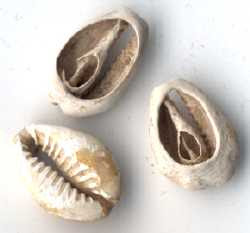Humans have used currency as a means of exchange, a method of payment, a standard of value, a store of wealth and a unit of account for thousands of years.
 | Money has many functions: It facilitates exchange as a unit of value; it brings societies together by enabling reciprocity; it perpetuates social hierarchies; and it is a medium of state power. Objects that were rare in nature emerged as units of value for exchange. |  |

Shang Dynasty cowry shells | Cowry shells were used in Africa, Europe, Asia and Australia. Native copper, meteorites or native iron, obsidian, amber, beads, copper, gold, silver and lead ingots have variously served as currency. People even used live animals such as cows until recent times as a form of currency. Stone weights were used not only for setting prices for goods, but also for converting between systems of weights and measures. The talent and the mina were standardized after the founding of the Akkadian Empire by Sargon of Akkad. Standardizing weights and measures is essential for effective taxation. The Mesopotamian shekel – the first known form of currency – emerged. The earliest known coins date to 650 and 600 B.C. in Lydia. Coinage as commodity money owes its success to its portability, durability and inherent value. Political leaders could control the production of coins – from mining, smelting, minting - as well as their circulation and use. |

Ancient Celtic ringmoney | Money soon became an instrument of political control. Taxes could be extracted to support the elite and armies could be raised. It enabled the movement of goods and services, migration and settlement among strangers. Money was able to mobilize resources, reduce risks and create alliances in response to social and political conditions. In short, money allowed humans to develop into the world we know today. |  |
No comments:
Post a Comment